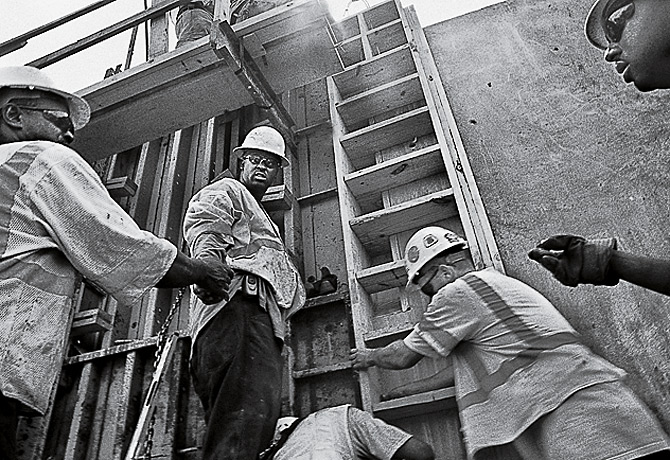
Workers from the Army Corps of Engineers finish the last part of the new flood wall at the 17th Street Canal in New Orleans, La., on July 2, 2007.
(2 of 8)
Today, Corps leaders are rebuilding New Orleans levees, but they say it will still take four more years and billions of dollars more just to protect the city from a 100-year storm, the protection they were required to provide before Katrina. That's still paltry compared with Amsterdam's 10,000-year-storm protection. But Corps officials have also committed to restoring the surge-softening marshes, cypress swamps and barrier islands that are disappearing at a rate of a football field nearly every half-hour. They say they now understand that the survival of New Orleans depends on a sustainable coast. "This is not the Corps of old," says Karen Durham-Aguilera, director of the agency's Task Force Hope. "The world has changed, and the Corps is changing too."
But for all the talk about restoring wetlands, almost every dime of the $7 billion the Corps has received since Katrina is going to traditional engineering: huge structures designed to control rather than preserve nature. And its latest plan seeks to extend those structures along the entire coast, calling for such massive levees across so much of the state that scientists call it the Great Wall of Louisiana. The Corps says it's just an idea, but Congress is about to authorize the first stretch of the wall—a $900 million, 72-mile (116 km) levee for isolated bayou towns like Chauvin, Dulac and Montegut. "Nothing has changed," says G. Edward Dickey, a former Corps chief of planning. "It's the same engineering mentality, except now they'll build the levees even bigger."
Bigger levees aren't all bad. New Orleans desperately needs them; one local slogan is, "Make Levees, Not War." But New Orleans needs its eroding wetlands just as desperately; another local slogan is, "Fix the Coast, or We Are Toast!" To prevent another disaster, the construction addicts of the Corps, their enablers in Congress and the U.S.'s cockamamie approach to water resources will all have to change. The Great Wall concept sounds a lot like the mistakes of the past.
Killing the Coast
New Orleans wasn't always a city in a bowl. The French founded it in 1718 on high ground along the Mississippi, a "natural levee" of sediment deposited by the river. That's why tourists in the French Quarter stayed dry during Katrina. And that's how all of south Louisiana was built—by the Mississippi River mutinying its banks and rambling around its floodplain like an unruly teenager, dropping mud around its delta and creating roughly 4.5 million acres (1.8 million hectares) of wetlands between New Orleans and the Gulf. So while the French built an earthen levee 1 mile long and 3 ft. high (1.6 km long, 1 m high) to block the river's annual tantrums, they didn't bother trying to block the occasional hurricanes that swept up the Gulf. "They didn't need hurricane levees," says Kerry St. Pe, a marine biologist whose ancestors arrived in 1760. "They had wetlands to protect them." New Orleans wasn't on the coast, and hurricanes wilt over land.